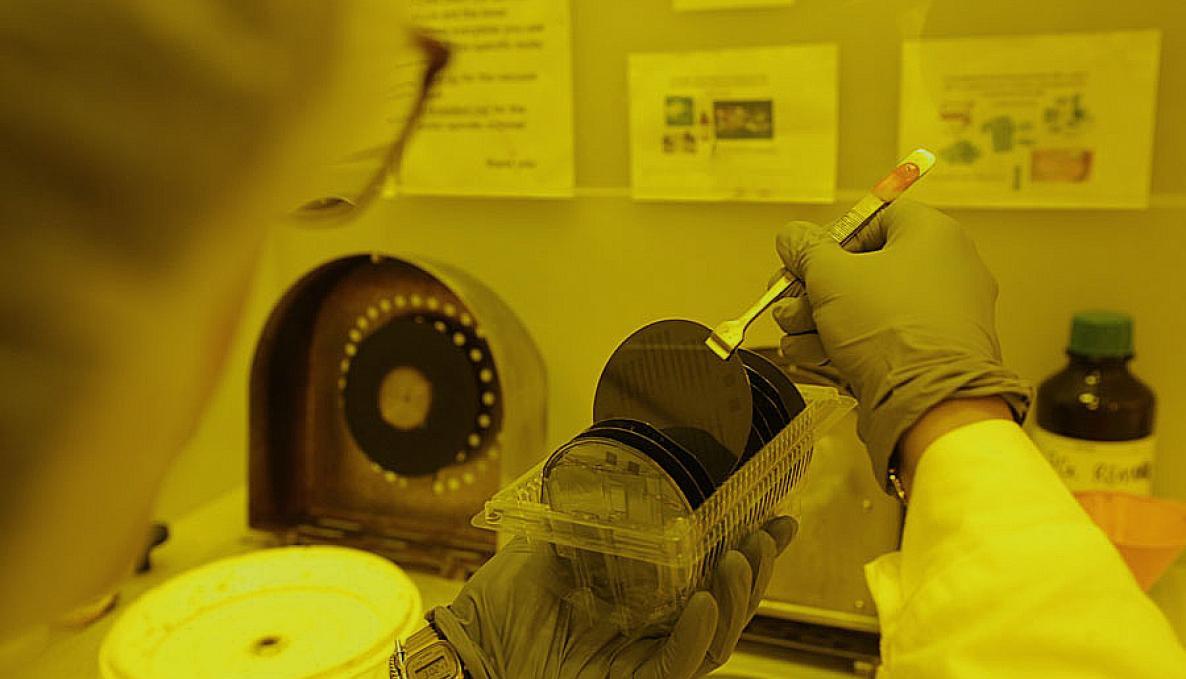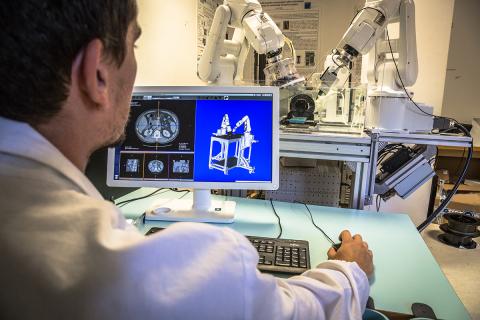MEDICAL ROBOTICS RESEARCH: ADVANCED IMAGING TECHNOLOGIES ENABLE SMALL SCALE ROBOTS FOR TARGETED DRUG DELIVERY IN CONFINED LOCATIONS OF THE HUMAN BODY

A study carried out by scientists at Sant’Anna School Biorobotics Institute, ETH Zurich and the Paul Scherrer Institute, reports about single microrobot imaging of structures as low as 100 µm in diameter, aimed at translating the soft miniaturized machines into clinical practice for targeted drug delivery.
Veronica Iacovacci, a post-doctoral researcher at the Biorobotics Institute, is the first author of the study titled “High-resolution SPECT imaging of stimuli-responsive soft microrobots” published in Small journal. Scientists have investigated the inclusion of radioactive compounds in soft thermoresponsive magnetic microrobots to enable their single‐photon emission computed tomography imaging. In this research, the Single‐Photon Emission Computed Tomography (SPECT) imaging of the microrobot combined with the inclusion of an imaging agent, can guarantee successful imaging independent of the properties of the surrounding tissue microstructures. Image reconstruction and registration among computed tomography (CT) and SPECT images confirmed microrobot identification. Both SPECT and CT images were recorded from different cutting planes: coronal, sagittal, and transversal.
“The soft microrobot is made of a thermally responsive hydrogel bilayer - said Veronica Iacovacci - The microrobot contains magnetic nanoparticles and a radioactive compound acting as an imaging agent in its hydrogel frame. The magnetic nanoparticles can be used to drive the locomotion remotely and trigger the shape transformation of the microdevice enabling high resolution tracking and imaging in vivo. The near infrared (NIR) imaging technique provides measures of both oxygenated and deoxygenated concentrations allowing the delivery of a therapeutic agent and the microrobot to be monitored in vivo”.
Over the past 10 years, Nanomedicine applications have been deployed in the areas of therapeutics, diagnostics and surgery. Minimally invasive microbots will now travel inside a patient and carry out surgery or drug delivery as the best alternative to medical devices such as flexible endoscopes and catheters. As they have the ability to access small and complex regions of the human body like blood capillaries, gastrointestinal, brain, or spinal cord, wireless micro‐ and nanoscale robots will perform tasks under the application of external power sources, or by harvesting reagents available in their surroundings.
“One of the ultimate goals of these devices is to perform biomedical tasks such as microsurgery or targeted drug delivery in confined locations of the human body”, said Iacovacci. “We have worked with teams from ETH Zurich and the Paul Scherrer Institute to promote collaborative research and facilitate access to funding. Our results reveal how research collaboration serves as a reminder that this translational study enables the construction of highly integrated micro‐ and nanorobotic platforms with multiple functionalities. We believe research collaboration leads to breakthrough innovation that benefit the public".
Scientists Arianna Menciassi, deputy rector at Sant’Anna School and the director of the Surgical Robotics and Allied Technologies area; Leonardo Ricotti, supervisor at the Micro-Nano-Bio Systems and Targeted Therapies Lab; Brad Nelson and Salvador Panè, from ETC Zurich Institute of Robotics and Intelligent Systems (IRIS), co-authored the paper published in Small journal on July 15, 2019.
For more photos, see: https://we.tl/t-VidbsGoPwH




